Fleet Reserve Association
The Fleet Reserve Association (FRA) is a non-profit U.S. military and veterans organization headquartered in Alexandria, Virginia. chartered by the United States Congress that represents the interests of enlisted Navy, Coast Guard, and Marine veterans and active duty personnel in the United States.
 FRA Emblem | |
| Established | January 1, 1924 |
|---|---|
| Founded at | Philadelphia, Pennsylvania |
| Type | 501(c)(19), veterans organization |
| 53-0067600 | |
| Headquarters | 125 N West Street, Alexandria, Virginia |
| Coordinates | 38.4825°N 77.0315°W |
Area served | Worldwide |
| Donna Jansky(Peabody, Massachusetts) | |
| National Executive Committee | |
Key people |
|
| Publication | FRAtoday |
| Subsidiaries |
|
| Website | www |
FRA represents approximately; 277,428 active-duty members of the Navy,[1] 163,346 active-duty of the Marine Corps[2] and 40,000 active-duty of the Coast Guard[3]
The FRA was named after the US Navy retirement procedure "PERS 836".[4] The organization was founded in Philadelphia on October, 1922, by Chief Yeoman George L. Carlin, and it was chartered on November 11, 1924, by the U.S. Congress[5]. The association is composed of branches located in each State, U.S. territory, and several overseas locations.
The guiding principles of the FRA are Loyalty Protection and Service. In addition to organizing events, members provide assistance at VA hospitals and clinics. It is active in issue-oriented U.S. politics. Its primary political activity is advocating on behalf of the Sea Service enlisted personnel, including support for benefits such as pay and pensions. The organization has also prompts "Americanism and Patriotism" through its essay contest[6].
History
1919: Chief Yeoman Robert W. White and Chief Gunner’s Mate Carl H. McDonald are the first enlisted personnel to testify before Congress. They present the enlisted perspective on military pay legislation. [7]
1921: Chief Yeoman George Carlin conceives an association dedicated to monitoring all legislation that impacts enlisted personnel. Carlin is considered the father of the FRA.
1923: The Association’s Constitution and Bylaws Committee determined membership eligibility for the new organization. The document stated, “a shipmate is a shipmate, regardless of race, creed or color.”
Conceived as the U.S. Fleet Naval Reserve Association. The organization was chartered as Fleet Reserve Association under Title_36_of_the_United_States_Code. Officially chartered by the U.S. Congress[8].
1925: FRA adopts its cardinal principles of “Loyalty, Protection and Service” as its official motto.
1925: The Association holds its first national convention in the place of its birth — Philadelphia.
Founded as an association for enlisted career Navy, FRA expanded its membership to Marine enlisted personnel in January 1956. The cover of the Naval Affairs published by The Fleet Reserve Association "For Career Navy and Marine Corps Enlisted Personnel. (Volume 35, No. 1 January 1958) By March 1957 the cover statesmen read "The Magazine for Career Enlisted Men of the U.S. Navy and U.S. Marines Corps." (Naval Affairs, March 1957) The next significant change was in October of 1970 when the cover statement was updates to The Magazine for Career Enlisted Personnel of the U.S Navy, Marine Corps and Coast Guard. The elimination of the word "Men" was significant as it opened FRA membership to enlisted women of the sea services.
The June 1971 issue of Naval Affairs announced the New National Emblem which included the initials USN USMC and USCG. The emblem was designed by Shipmate Willis H., Wolfe.
Publications
The organization's official monthly full color magazine was originally launched in 1921 and called U.S. Navy Magazine "Fleet Reserve Bulletin" in October of 1931 it was renamed Naval Affairs.[9] In December 2006 the magazine's name and volume numbering system changed again, this time to FRAtoday.[10] The publications typically is 48 pages of content.
Organization structure
National
The Fleet Reserve Association Headquarters is located in Alexandria, Virginia. It is the primary office for the National President and also houses the FRA museum, library, membership services, communications, and the magazine editorial offices.[11]
Regions
Each Branch is assigned to a region. Each region oversees 10-30 branches, to help each smaller group have a larger voice.
Branch
The Branch is the basic unit of the Fleet Reserve Association and usually represents a small geographic area such as a single town or a few counties. There are roughly 170 branches in the United States, Japan and the Philippines. The Branches located overseas are intended to allow active duty military stationed and veterans living overseas to be actively involved with the Fleet Reserve Association as if they were in the United States. Members who do not live near a branch are referred to as Members at Large. The Branch is used for formal business such as meetings and a coordination point for community service projects. Often the Branch will host community events such as bingo, holiday celebrations, and be available to other organizations. It is also not uncommon for the Branch to contain a bar open during limited hours. A Branch member is distinguished by a navy blue garrison cap with gold piping.
Members
Membership peaked for the Fleet Reserve Association at about 190,000 in the mid-1990s. Membership has been decreasing since then and is estimated to be about 45,000 (2018). A member's FRA service/garrison cap is distinguished by a gold crown, blue sides, gold piping and the Fleet Reserved Association National seal referred to as the Triangle. Members often add gold lettering with the member's status such as Life Member, officer title and Branch number or Member at Large.
The Branch officer is distinguished by a gold-topped garrison cap, navy blue brim with gold piping. The executive committee representative is distinguished by a gray-topped garrison cap with gold piping. Current and past national presidents are distinguished by a red-topped garrison cap with gold piping.
The Fleet Reserve Association Button which is a miniature of the FRA Emblem is to be worn only by members of the Fleet Reserve Association.
Eligibility
Individuals who are now serving or served in an enlisted status in either the Navy, Coast Guard, or Marine are potentially eligible for membership in The Fleet Reserve Association. Members must have been honorably discharged or still serving honorably.
Notable members
Notable members of The Fleet Reserve Association have included:
 Dilbert Black, first Master Chief Petty Officer of the Navy
Dilbert Black, first Master Chief Petty Officer of the Navy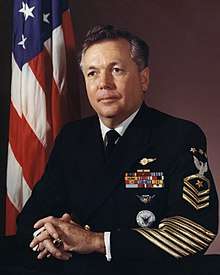 John_Whittet, second Master Chief Petty Officer of the Navy
John_Whittet, second Master Chief Petty Officer of the Navy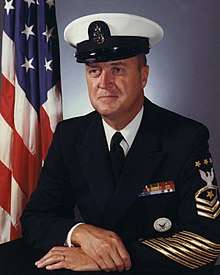 Robert_Walker_(sailor), third Master Chief Petty Officer of the Navy
Robert_Walker_(sailor), third Master Chief Petty Officer of the Navy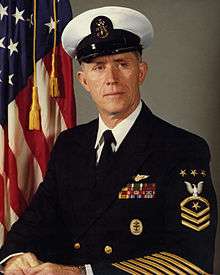 Billy_C._Sanders, fifth U.S. Master Chief Petty Officer of the Navy
Billy_C._Sanders, fifth U.S. Master Chief Petty Officer of the Navy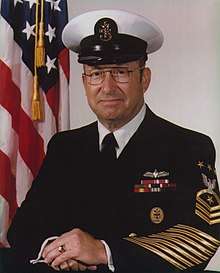 William_H._Plackett, sixth U.S. Master Chief Petty Officer of the Navy
William_H._Plackett, sixth U.S. Master Chief Petty Officer of the Navy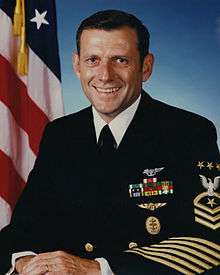 Duane_R._Bushey, seventh Master Chief Petty Officer of the Navy
Duane_R._Bushey, seventh Master Chief Petty Officer of the Navy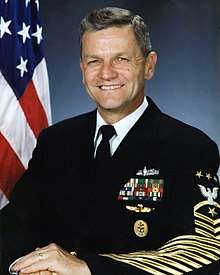 John_Hagan_(sailor), eighth Master Chief Petty Officer of the Navy
John_Hagan_(sailor), eighth Master Chief Petty Officer of the Navy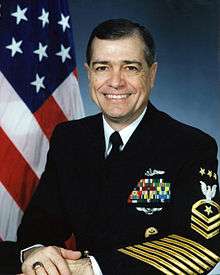 James_L._Herdt, ninth Master Chief Petty Officer of the Navy
James_L._Herdt, ninth Master Chief Petty Officer of the Navy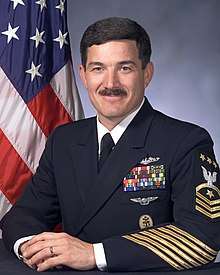 Terry_D._Scott 10th Master Chief Petty Officer of the Navy
Terry_D._Scott 10th Master Chief Petty Officer of the Navy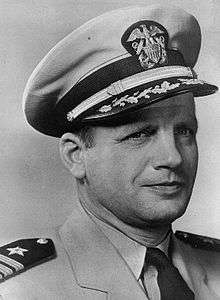 Richard_Antrim, World War II Medal of Honor Recipient
Richard_Antrim, World War II Medal of Honor Recipient- Ernest_Borgnine, American actor, and Navy Veteran
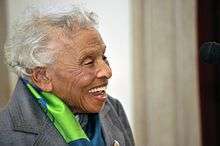 Olivia_Hooker, first African-American woman to have entered the U.S. Coast Guard
Olivia_Hooker, first African-American woman to have entered the U.S. Coast Guard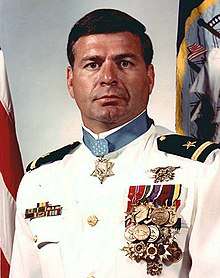 Michael_E._Thornton, Recipient of the U.S. Medal of Honor
Michael_E._Thornton, Recipient of the U.S. Medal of Honor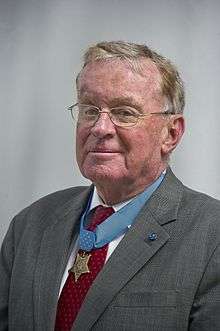 Thomas_G._Kelley, Recipient of the U.S. Medal of Honor
Thomas_G._Kelley, Recipient of the U.S. Medal of Honor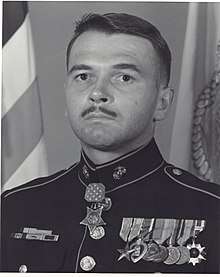 Allan_J._Kellogg, Recipient of the U.S. Medal of Honor
Allan_J._Kellogg, Recipient of the U.S. Medal of Honor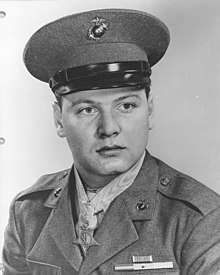 Duane_E._Dewey, Recipient of the U.S. Medal of Honor
Duane_E._Dewey, Recipient of the U.S. Medal of Honor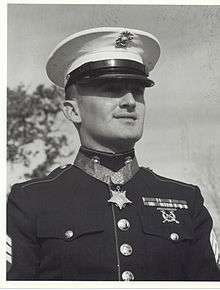 Robert Emmett O'Malley, Recipient of the U.S. Medal of Honor
Robert Emmett O'Malley, Recipient of the U.S. Medal of Honor Daniel_C._Burbank, American Astronaut (Ret.)
Daniel_C._Burbank, American Astronaut (Ret.)
List of Past National Presidents
- William P. Green, 1922-1924*
- Francis A. Knaus, 1924-1925*
- Ed W. Wintering, 1925-1926*
- Charles J. Batchelor, 1926-1927*
- Robert A. Young, 1927-1928*
- Otto Grunewald, 1928-1929*
- Logan E. Ruggles, 1929-1930*
- Philip G. Cronan, 1930-1931*
- Cornelius E. Anderson, 1931-1932-1933*
- Jesse Acuff, 1933-1934*
- Abraham M. Rosenberg, 1934-1935*
- John J. Bayer, 1935-1936*
- Carl A. Viken, 1936-1937*
- Jesse F. Cordes, 1937-1938*
- Alexander Steele, 1938-1939*
- Thomas C. Ryan, 1939-1940*
- George C. Corbell, 1940-1941*
- Frank T. Walker, 1941-1942*
- John H. Burke, 1942-1943*
- Clarence Boeckman, 1943-1944*
- James H. Van Slycke, 1944-1945*
- Robert W. Allen, 1945-1946*
- Robert F. Bonomarte, 1946-1947*
- Fredrick E. Grammer 1947-1948*
- Christopher C. Sanders, 1948-1949*
- Leo A. La Belle, 1949-1950*
- James J. Ralph, 1950-1951*
- James W. Mullins, 1951-1952*
- Charles D. Hause, 1952-1953*
- Edward E. Keeley, 1953-1954*
- Michael F. Catania, 1954-1955*
- William F. Hickey, 1955-1956*
- Wilson H. Sandefer, 1956-1957*
- Edgar H. Cook, 1957-1958*
- Robert E. Doherty, 1958-1959*
- Harold W. Elke, 1959-1960*
- Charles A. Herget, 1960-1961*
- Joseph Keehan, 1961-1962*
- Robert A. Means, 1962-1963*
- Edward C. Duffy, 1963-1964*
- George C. Bernatz, 1964-1965*
- Eddie King, 1965-1966*
- Lawrence M. Bane 1966-1967*
- Bernard P. O'hara 1969-1968*
- Stanley S. Nahill 1968-1969*
- Walter C. Rowell, 1969-1970*
- Robert L. Bastian, 1970-1971*
- Francis E. McCulley, 1971-1972*
- William A. Holdforth, 1972-1973*
- Marvin Silverman, 1973-1974*
- Albert E. Wilson, 1974-1975*
- Joseph D. Morin, 1974-1976*
- Thomas A. Heaney, 1976-1977*
- Royce J. Hatfield, 1977-1978*
- Roderick D. Wiley, 1978-1979*
- Marvin F. Harris, 1979-1980*
- James W. Neal, 1980-1981*
- Lawerence J. Cummings, 1981-1982*
- Charles R. McIntyre, 1982-1983*
- Daniel Spalding, 1983-1984*
- Geworge E. Brown, 1984-1985*
- Townsand I King, 1985-1986*
- William G. McCarley 1986-1987*
- Peter R. Ross Jr.,1987-1988*
- John A. Putney, 1988–1989*
- Jack A. Coover, 1989–1990*
- William E. Combes, 1990–1991
- Wallace E Baker, 1991–1992*
- Aloysius D. Caso, 1992–1993*
- W.J. "Jim New, 1993–1994*
- George P. Hyland, 1994–1995
- J.C. "Jim" Eblen, 1995–1996*
- Robert E. Fudge, 1996–1997*
- Robert G. Beese, 1997–1998
- Thomas l. Lisher, 1998–1999*
- Marvin W. Johnson, 1999–2000
- Eugene Smith, 2000–2001*
- Richard M. Smith, 2001–2002
- Ralph A. Schmidt, 2002–2003*
- Josweph L. Maez, 2003–2004*
- George R. Key, 2004–2005
- Edgar M. Zerr, 2005–2006*
- Jerry L. Sweeney, 2006–2007
- Lawrence J. Bourdreaux, 2007–2008
- F. Donald Mucheck, 2008–2009
- Gary C. Blackburn, 2009–2010
- James W. Scarbro, 2010–2011*
- Jeffrey A. Gilmartin, 2011–2012
- Mark A. Kilgore, 2012–2013
- Virgil P Courneay, 2013–2014 2015-2016
- John D. Ippert, 2014–2015
- Donald E. Larson, 2016-2017
- William E. Starkey, New Jersey, 2017-2018
- Robert Washington, 2018-2019
- Donna Jansky, Peabody, MA, 2019-Present
"*" Reported to the Staff of the Supreme Commander
See also

References
- Navy Stats
- USMC July 2017 Report
- USCG Stats
- http://www.public.navy.mil/bupers-npc/career/retirement/EnlistedRetirements/Pages/default.aspx
- http://uscode.house.gov/view.xhtml?path=/prelim@title36/subtitle2/partB/chapter701&edition=prelim
- https://www.fra.org/fra/Web/Events_and_Programs/7_12th_Grade_Essay_Contest/Web/Content/Essay_Contest.aspx?hkey=707c4b42-2eb8-4992-9d57-31b8bd14c68a
- https://books.google.com/books?id=hczSb1kLswwC&ppis=_c&lpg=SL1-PA4807&ots=_Qua6hyXbA&dq=Chief%20Yeoman%20George%20Carlin&pg=SL1-PA4807#v=onepage&q=Chief%20Yeoman%20George%20Carlin&f=false
- http://uscode.house.gov/view.xhtml?path=/prelim@title36/subtitle2/partB/chapter701&edition=prelim
- [Naval Affairs http://ufdc.ufl.edu/AA00052862/00001 Naval Affairs,] OCLC 4123895.OCLC Number: Master negative microfilm held by University Microfilms, now part of ProQuest.
- FRAtoday, OCLC 80940360.
- Fleet Reserve Association: Office Locations